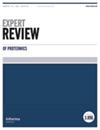The potential of proteomics for in-depth bioanalytical investigations of satellite cell function in applied myology.
IF 3.8
3区 生物学
Q1 BIOCHEMICAL RESEARCH METHODS
引用次数: 0
Abstract
INTRODUCTION Regenerative myogenesis plays a crucial role in mature myofibers to counteract muscular injury or dysfunction due to neuromuscular disorders. The activation of specialized myogenic stem cells, called satellite cells, is intrinsically involved in proliferation and differentiation, followed by myoblast fusion and the formation of multi-nucleated myofibers. AREAS COVERED This report provides an overview of the role of satellite cells in the neuromuscular system and the potential future impact of proteomic analyses for biomarker discovery, as well as the identification of novel therapeutic targets in muscle disease. The article reviews the ways in which the systematic analysis of satellite cells, myoblasts and myocytes by single cell proteomics can help to better understand the process of myofiber regeneration. EXPERT OPINION In order to better comprehend satellite cell dysfunction in neuromuscular disorders, mass spectrometry-based proteomics is an excellent large-scale analytical tool for the systematic profiling of pathophysiological processes. The optimized isolation of muscle-derived cells can be routinely performed by mechanical/enzymatic dissociation protocols, followed by fluorescence-activated cell sorting in specialized flow cytometers. Ultrasensitive single cell proteomics using label-free quantitation methods or approaches that utilize tandem mass tags are ideal bioanalytical approaches to study the pathophysiological role of stem cells in neuromuscular disease.蛋白质组学在应用肌理学中对卫星细胞功能进行深入生物分析研究的潜力。
导言再生性肌生成在成熟肌纤维中发挥着关键作用,可对抗神经肌肉疾病导致的肌肉损伤或功能障碍。被称为卫星细胞的特化肌原干细胞的活化在本质上参与了增殖和分化,随后是肌母细胞融合和多核肌纤维的形成。为了更好地理解神经肌肉疾病中的卫星细胞功能障碍,基于质谱的蛋白质组学是系统分析病理生理过程的极佳大规模分析工具。肌肉衍生细胞的优化分离可通过机械/酶解协议常规进行,然后在专用流式细胞仪中进行荧光激活细胞分选。使用无标记定量方法或串联质量标记的超灵敏单细胞蛋白质组学是研究干细胞在神经肌肉疾病中的病理生理作用的理想生物分析方法。
本文章由计算机程序翻译,如有差异,请以英文原文为准。
求助全文
约1分钟内获得全文
求助全文
来源期刊

Expert Review of Proteomics
生物-生化研究方法
CiteScore
7.60
自引率
0.00%
发文量
20
审稿时长
6-12 weeks
期刊介绍:
Expert Review of Proteomics (ISSN 1478-9450) seeks to collect together technologies, methods and discoveries from the field of proteomics to advance scientific understanding of the many varied roles protein expression plays in human health and disease.
The journal coverage includes, but is not limited to, overviews of specific technological advances in the development of protein arrays, interaction maps, data archives and biological assays, performance of new technologies and prospects for future drug discovery.
The journal adopts the unique Expert Review article format, offering a complete overview of current thinking in a key technology area, research or clinical practice, augmented by the following sections:
Expert Opinion - a personal view on the most effective or promising strategies and a clear perspective of future prospects within a realistic timescale
Article highlights - an executive summary cutting to the author''s most critical points.
文献相关原料
| 公司名称 | 产品信息 | 采购帮参考价格 |
|---|
 求助内容:
求助内容: 应助结果提醒方式:
应助结果提醒方式:


